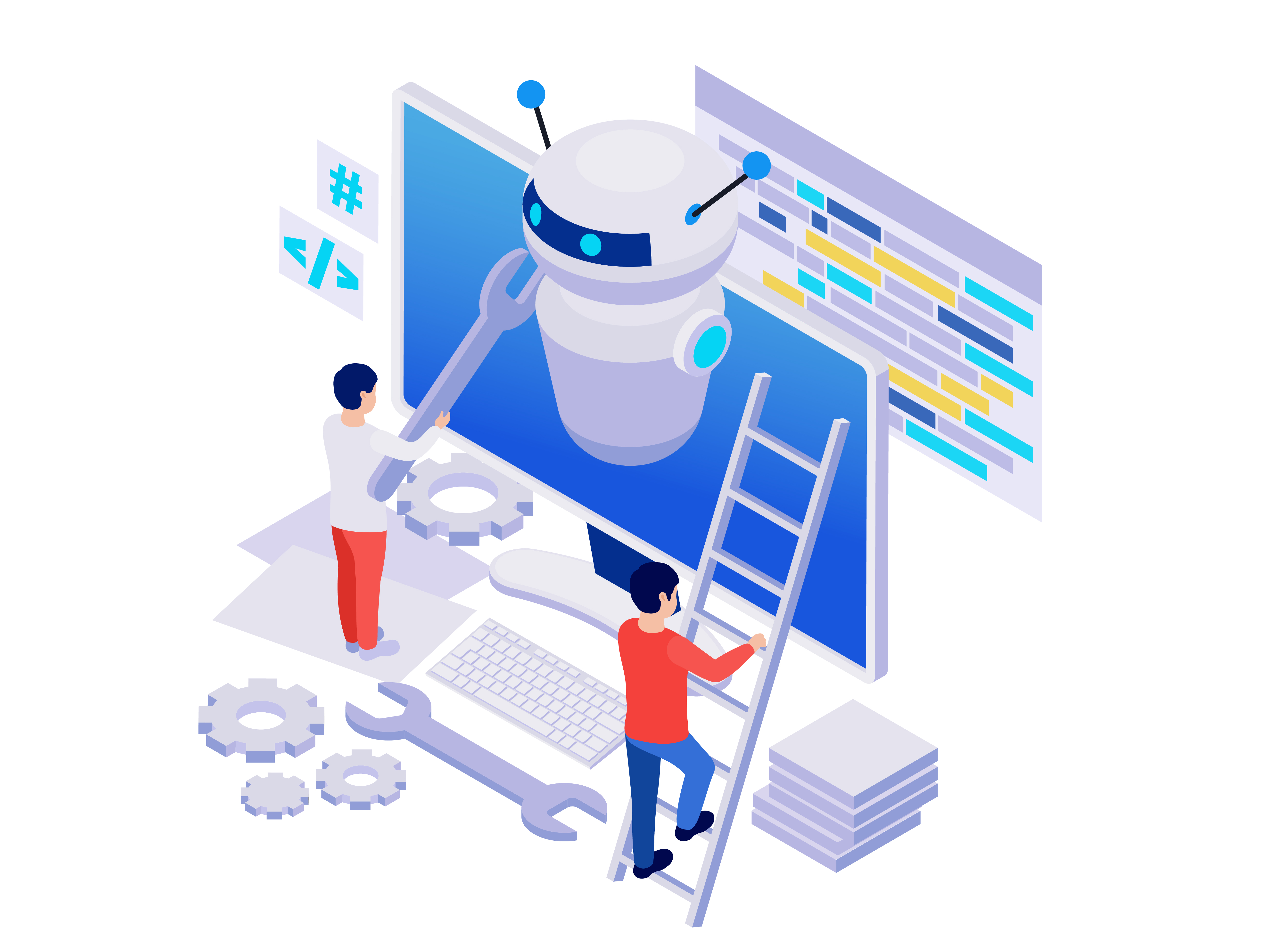Introduction

We are constantly bombarded with the latest technological advancements, with each new one promising to solve this or that problem, or aiming to be the most powerful tool available in the market. Then there are technologies that aim to lower the barriers to creating functionalities and applications, simplifying the process such that people with little or no programming experience can create custom software applications.
Such tools and platforms are called low-code and no-code (LCNC) technologies. These technologies have emerged in recent years and grown in popularity as users - whether you are a complete newbie or seasoned developer - who do not need to create from scratch. People of different skill levels and professional backgrounds can utilize LCNC platforms to bring their ideas to life - whether it is a student creating a mobile application for a project, an entrepreneur who wants to automate repetitive tasks, or an organization tinkering around during the initial stages of product development but trying to keep costs low.
In 2022, technological research and consulting firm Gartner forecasted the worldwide market for LCNC to grow 20% in 2023. Gartner stated in a December 2022 press release that “a rise in business technologists and a growing number of enterprise-wide hyperautomation and composable business initiatives will be the key drivers accelerating the adoption of low-code technologies through 2026.”
While it has been asked what kind of disruption LCNC would cause to tech development (developers, programmers), pundits have voiced out that developers would never be out of work and that there are plenty of jobs to go around. This is because while more people will be interacting with tech through the LCNC tools and platforms, accessibility is not the same as context or security or scalability. In a blog post, Stack Overflow CEO Prashanth Chandrasekar was quoted as saying that while “there are lots of benefits to low-code platforms…the need for context will undoubtedly remain consistent.”
BENEFITS AND SHORTCOMINGS
PROS: Since it does not require in-depth knowledge about coding, LCNC "limits the barrier to entry for software creation" (Northwest Executive Education, 2023). It offers a wider accessibility for contributors. Someone can create a mobile application without hiring a development team; an amateur developer can produce an enterprise-level application or code effectively. LCNC platforms are accessible and convenient to use even to inexperienced and non-developers.
PROS: LCNC platforms open avenues for collaboration for both kinds of users, given its accesibility to both experienced and non-experienced developers and technical and non-technical teams.
This allows team members with different skill sets to collaborate without needing to be coding-savvy. Appian (n.d.) described low-code and no-code platforms as a well-organized toolbox, helping an enterprise's development team to collaborate "ensuring that changes are organized, tracked, and understood".
PROS: Northwest Executive Education (2023) states that LCNC platforms offer reduced errors and less limited options for who can contribute. The same article further discussed that enterprises could save time and resources by minimizing error fixes and reducing the need for hiring skillful and experienced developers. Thus, adopting LCNC solutions could significantly lower the overall cost in the long run.
PROS: Since LCNC provide pre-built templates and drag-and-drop reusable components, it requires less time in coding and, as mentioned earlier, in fixing errors. It also reduces the time needed to connect with databases. One of the blogs from Appian even exclaimed that LCNC platforms "dramatically accelerate development" and claimed that time is no longer a barrier to productivity. A study conducted by McKinsey & Company (2022) disclosed that LCNC technologies have the potential to accelerate development time by 90%. After all, the features of low-code and no-code platforms such as pre-built templates, drag-and-drop components, query builders, etc. are designed to speed up the development and launch of products.
PROS: The existence of pre-built templates and drag-and-drop interfaces in low-code and no-code platforms save users from repetitive and mundane tasks. This allows developers to focus on value-added and complex tasks, resulting in increased productivity and efficiency.
CONS: The prebuilt templates and drag-and-drop component features of LCNC software dwindle design creativity. Since there are pre-built templates, variations in creative designs and elements are getting fewer. In fact, Abdallat (cited in Forbes, 2023) shared that the pervasiveness of the prebuilt templates, "has come to the point that you can tell what exact template was used just by looking at a website". It seems as if our creative limits are not getting pushed or challenged with LCNC platforms.
CONS:Though there is no longer a barrier to productivity, as claimed by Appian (n.d.), Northwest Executive Education (2023) states that LCNC platforms put a barrier to implementing complex design requirements. The same article exemplified an enterprise that does not find low-code and no-code platforms flexible, as it might not be able to build a "highly specialized accounting software tailored to their industry-specific needs". Although Low-code and no-code are cost-saving and accessible, they might limit what users can create.
CONS: The inherent properties of LCNC platforms, being accessible and convenient even to non-technical users, is precisely what lays the foundation for the potential learning curve. Northwest Executive Education (2023) believess that learning curve coould still be anticipated, despite the low-code nd no-code platform does not require in-depth nowledge about coding, as it could be linked to mastering the distinct features and workflows of the platform.
CONS:Having pre-built features in LCNC may inadvertently introduce errors and security threats. Forbes (2023) emphasized that these tools can make the users complacent, tempting them to overlook important safeguarding procedures. Additionally, individuals constructing apps through low-code and no-code might lack the necessary security expertise and practical knowledge to ensure their app's security.
CONS: Vendor lock-in refers to a situation where a customer becomes dependent on the vendor to the point of being stuck, as switching to another vendor is too risky and costly. In the context of using LCNC platforms, users may experience vendor lock-in, relying heavily on a specific low-code or no-code platform, and switching to another platform might cause rewriting of the whole process and application. Forbes (2023) describes vendor lock-in as the "main downside" in using low-code and no-code platforms.
ARTICLES

Photo Courtesy: Daniel Korpai (2018) | Unsplash
How do Low-Code and No-Code (LCNC) Technologies Perform Alongside Their Differences?
Processes and mechanisms of LCNC platforms, including its distinctive characteristics of two materials

Photo Courtesy: Freepik
Closing the Gap
Transformational effects of LCNC platforms on enterprise applications and business operations

Photo Courtesy: Freepik
Complimentary Innovations: Redefining Development in the Digital Space via Low-Code/No-Code and AI Integration
Dive into the realm of AI-integrated LCNC development platforms, exploring emerging opportunities for content creation and broad development processes in the digital landscape.
Takeaways
Evidently, there is a persistent rise of the Low-Code and No-Code (LCNC) approach to software development, and it can be attributed to the increased need to rapidly develop applications and digitise processes. In a world where competition is stiff, the desire to create an application or automate a task is heightened, and so one would resort to an approach that promotes accessibility and convenience, collaboration, cost savings, integration efficiency, increased productivity, and diminished dependence on highly specialized developers, among others. These given characteristics are the beneficial qualities of LCNC platforms.
Surely, LCNC technologies have their share of drawbacks - declining design innovation, limited customization, inadequate security, and vendor lock-in to name a few. Technology pervasiveness demand simpler ways of developing software applications which is why these disadvantages may be considered as minor and can be dealt with via some available workarounds.
Overall, LCNC is undoubtedly a game-changer, what with the bright future it contributes in this day and age of digital transformation.
REFERENCES
Boboyorova, C. (2023, March 07). An Introduction to No-Code/Low-Code platforms: Seven things you should know. Forbes. https://www.forbes.com/sites/forbestechcouncil/2023/03/07/an-introduction-to-no-codelow-code-platforms-seven-things-you-should-know/?sh=59704c3f5fe2
Gartner Forecasts Worldwide Low-Code Development Technologies Market to Grow 20% in 2023. (2022, December 13). Gartner. https://www.gartner.com/en/newsroom/press-releases/2022-12-13-gartner-forecasts-worldwide-low-code-development-technologies-market-to-grow-20-percent-in-2023
Dene, K. (2022, August 11). Will low and no code tools ever truly disrupt tech development? Stack Overflow. https://stackoverflow.blog/2022/08/10/will-low-and-no-code-tools-ever-truly-disrupt-tech-development/
Pratt, M. (2021). Low-code and no-code development platforms. TechTarget. https://www.techtarget.com/searchsoftwarequality/definition/low-code-no-code-development-platform
What is low-code/no-code application development?. (n.d.). SAP. https://www.sap.com/sea/products/technology-platform/low-code/what-is-low-code-no-code.html
Arkhipov, A. (2022, December 28). Everything You Need to Know About Low-code VS No-code. TechMagic. https://www.techmagic.co/blog/low-code-vs-no-code/
5 Pros and Cons of No-Code Development. (2023, September 21). Northwest Executive Education. https://northwest.education/insights/careers/5-pros-and-cons-of-no-code-development/
Top 7 Low Code Benefits and Why they're important. (n.d.) Appian. https://appian.com/learn/topics/low-code/low-code-benefits.html
Low-Code and No-Code: 19 Potential Downsides to be aware of. (2023, July 28). Forbes. https://www.forbes.com/sites/forbestechcouncil/2023/07/28/low-code-and-no-code-19-potential-downsides-to-be-aware-of/?sh=1c453ae5284c
McKinsey & Company. (2022). McKinsey Technology Trends Outlook 2022: Next Generation Software Development. https://www.mckinsey.com/~/media/mckinsey/business%20functions/mckinsey%20digital/our%20insights/the%20top%20trends%20in%20tech%202022/mckinsey-tech-trends-outlook-2022-next-gen-software.pdf
Bubble | Build Powerful Full-Stack Apps Without Code. (n.d.). Bubble. https://bubble.io/
What is Bubble.io? A guide to building a Bubble app for beginners. (n.d.) Airdev. https://www.airdev.co/post/what-is-bubble-beginners-guide-building-bubble-app
What is Bubble.io? Your Guide to the Top No-Code Platform. (2023). LowCode Agency. https://www.lowcode.agency/blog/bubble-io
Lee, P. (2018, April 05). What You Need to Know About the Lightning Platform. Salesforce. https://www.salesforce.com/blog/about-the-lightning-platform-blog/
Nguyen, A. (n.d.). A Guiding Light To Leverage Salesforce Low Code Platform. Synodus. https://synodus.com/blog/low-code/salesforce-low-code/
Mendix, low-code application development platform. (2022, October 26). Battery Ventures. https://www.battery.com/blog/mendix-case-study
Mendix Low-Code Platform Features - Low-Code App Development Tools | Mendix. (2023, December 6). Mendix. https://mendix.com/platform
Mendix. (n.d.). Siemens Software. https://www.plm.automation.siemens.com/global/en/products/mendix/
Carroll, N., Móráin, L., Garrett, D., & Jamnadass, A. (2021). The Importance of Citizen Development for Digital Transformation. Cutter IT Journal, 34, 5-9. https://www.researchgate.net/publication/350734831_The_Importance_of_Citizen_Development_for_Digital_Transformation
Pajorska, Z. (2023). Low-code Gartner forecasts for 2023. Stratoflow. https://stratoflow.com/low-code-gartner-forecasts/#predicts
Glynn, L. (2023). Comparing no code/low code vs traditional development costs in 2023 – save $99K+. forms2. https://forms2mobile.com/blog/comparing-low-code-no-code-vs-traditional-development-costs/
Laskowski, N. (2023). What is Artificial Intelligence and How Does AI Work? | Definition from TechTarget. TechTarget. https://www.techtarget.com/searchenterpriseai/definition/AI-Artificial-Intelligence
Haas, J., (2023, March 27). Why AI + No-Code is the Future. Bubble.io. https://bubble.io/blog/bubble-ai-no-code/


